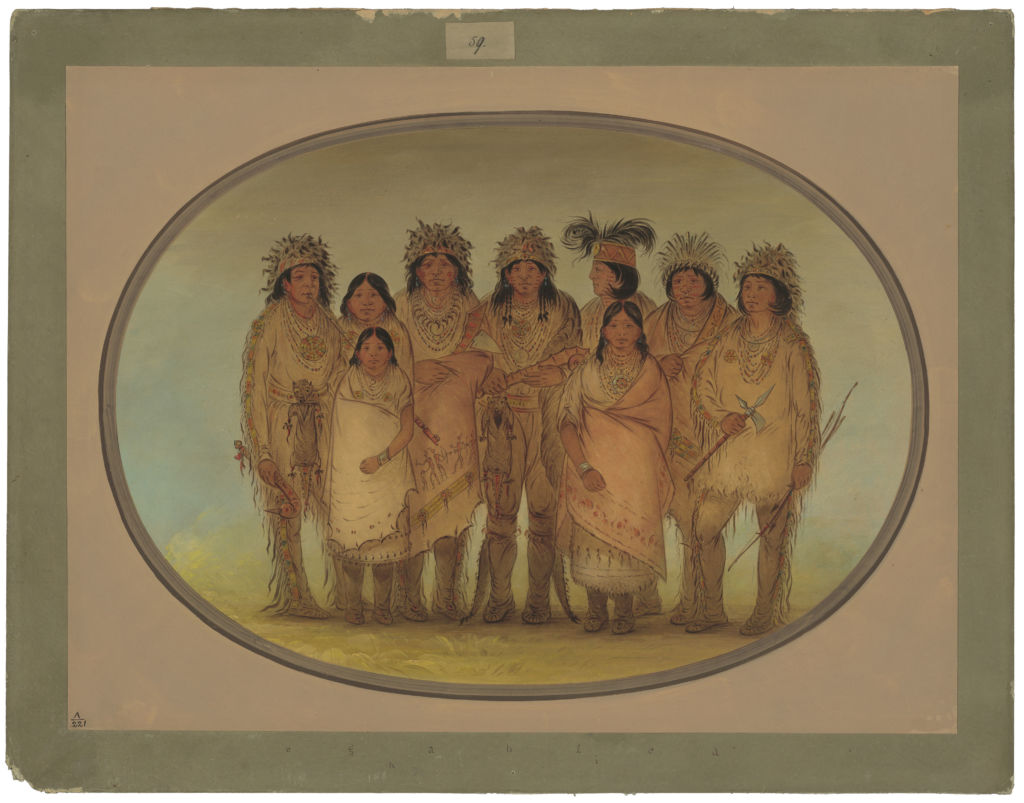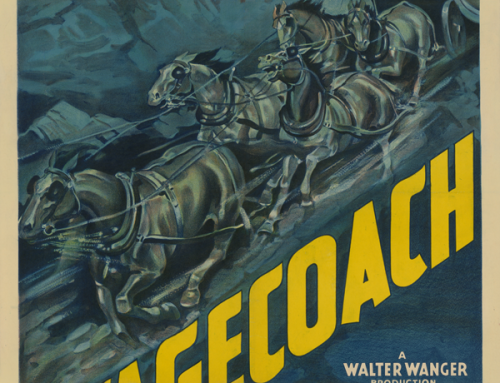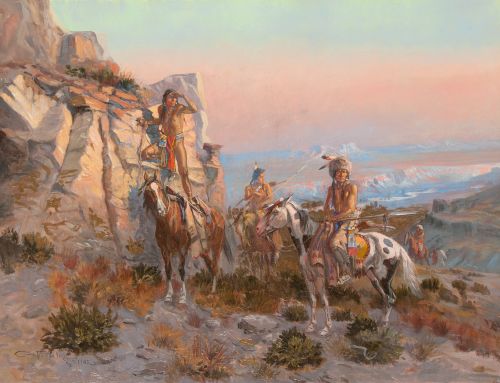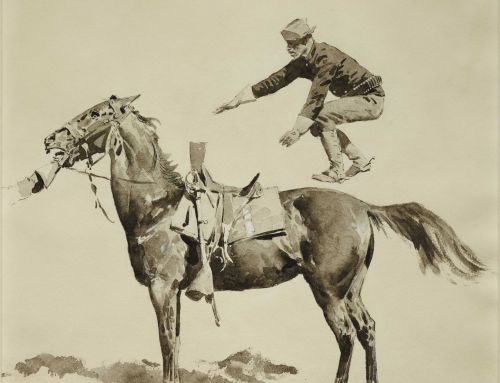As mentioned previously, George Catlin painted 500 Native American portraits and scenes of everyday life of 48 Indian tribes—buffalo hunts, dances, games, amusements, rituals, and religious ceremonies—that he witnessed on summer excursions in 1832, 1834, 1835, and 1836. Collectively, these paintings exhibited as what Catlin referred to as his Indian Gallery. Our current exhibition, Take Two: George Catlin Revisits the West, features 17 paintings from the artist’s Second Indian Gallery.

George Catlin | Nine Ojibbeway Indians in London | 1861 – 1869 | Oil on card mounted on paperboard
After Catlin toured his collection around the U.S., he journeyed to Europe and first landed in England. Looking for a new audience, he arrived in Paris in 1845. As with his exhibition in London, where he enjoyed an audience with Queen Victoria, Catlin cultivated a close relationship with the king of France, Louis-Philippe during his stay in Paris. The French king even reserved a room in the Louvre for the display of Catlin’s Indian Gallery and scheduled a private viewing for the royal family and guests.
Later, the collection of paintings, artifacts, and Indian representatives (twelve Iowa Indians who had also joined Catlin in England), exhibited at the Salle Valentino in Paris. The reception of the French press was enthusiastic. Critics viewed the work as a genuinely American product. Many Romantic artists took note, including the poet and writer Charles Baudelaire, novelist George Sand, and painter Eugène Delacroix. Struck by his raw colors, Baudelaire took Catlin seriously as an artist and wrote two salon reviews about the American. The French poet praised the lightness of Catlin’s skies and believed the raw color and rude form of Catlin’s art bore deep and mysterious meaning. Sand would return to the exhibition more than once to talk with the Iowas. She was eager to understand their customs, their religious beliefs, and their views on French society. Delacroix made several known studies of the Indians, one of which was included in the recent exhibition Mind’s Eye: Masterworks on Paper from David to Cézanne at the Dallas Museum of Art.
Catlin stayed in France until 1848 when a revolution broke out resulting in the overthrow of King Louis Philippe.






Leave A Comment